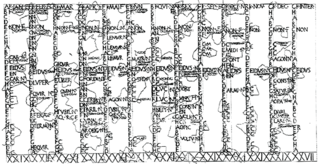 W
WThe Roman calendar was the calendar used by the Roman kingdom and republic. The term often includes the Julian calendar established by the reforms of the dictator Julius Caesar and emperor Augustus in the late 1st century BC and sometimes includes any system dated by inclusive counting towards months' kalends, nones, and ides in the Roman manner. The term usually excludes the Alexandrian calendar of Roman Egypt, which continued the unique months of that land's former calendar; the Byzantine calendar of the later Roman Empire, which usually dated the Roman months in the simple count of the ancient Greek calendars; and the Gregorian calendar, which refined the Julian system to bring it into still closer alignment with the tropical year.
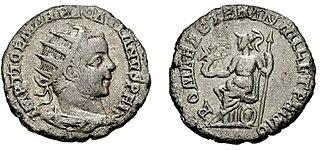 W
WAb urbe condita, or Anno urbis conditae, often abbreviated as AUC, is an expression used in antiquity and by classical historians to refer to a given year in Ancient Rome. In reference to the traditional year of the foundation of Rome, the year 1 BC would be written AUC 753, whereas 1 AD would be AUC 754. The foundation of the Roman Empire in 27 BC would be AUC 727.
 W
WAprilis or mensis Aprilis (April) was the fourth month of the ancient Roman calendar, following Martius (March) and preceding Maius (May). On the oldest Roman calendar that had begun with March, Aprilis was the second of ten months in the year. April had 30 days on calendars of the Roman Republic, with a day added to the month during the reform in the mid-40s BC that produced the Julian calendar.
 W
WThe dog days or dog days of summer are the hot, sultry days of summer. They were historically the period following the heliacal rising of the star system Sirius, which Hellenistic astrology connected with heat, drought, sudden thunderstorms, lethargy, fever, mad dogs, and bad luck. They are now taken to be the hottest, most uncomfortable part of summer in the Northern Hemisphere.
 W
WThe Fasti, sometimes translated as The Book of Days or On the Roman Calendar, is a six-book Latin poem written by the Roman poet Ovid and published in A.D. 8. Ovid is believed to have left the Fasti incomplete when he was exiled to Tomis by the emperor Augustus in 8 AD. Written in elegiac couplets and drawing on conventions of Greek and Latin didactic poetry, the Fasti is structured as a series of eye-witness reports and interviews by the first-person vates with Roman deities, who explain the origins of Roman holidays and associated customs—often with multiple aetiologies. The poem is a significant, and in some cases unique, source of fact in studies of religion in ancient Rome; and the influential anthropologist and ritualist J.G. Frazer translated and annotated the work for the Loeb Classical Library series. Each book covers one month, January through June, of the Roman calendar, and was written several years after Julius Caesar replaced the old system of Roman time-keeping with what would come to be known as the Julian calendar.
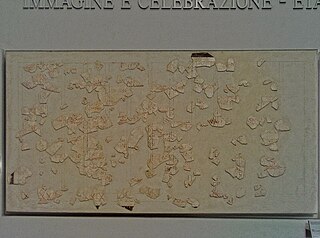 W
WThe Fasti Antiates Maiores is a painted wall-calendar from the late Roman Republic, the oldest archaeologically attested local Roman calendar and the only such calendar known from before the Julian calendar reforms. It was created between 84 and 55 BC and discovered in 1915 at Anzio, the ancient Antium, in a crypt next to the coast. It is now located in the Palazzo Massimo alle Terme in Rome, part of the Museo Nazionale Romano, while a reconstruction of it is in the Museo del Teatro de Caesaragusta also in Rome.
 W
WThe Fasti Capitolini, or Capitoline Fasti, are a list of the chief magistrates of the Roman Republic, extending from the early fifth century BC down to the reign of Augustus, the first Roman emperor. Together with similar lists found at Rome and elsewhere, they form part of a chronology referred to as the Fasti Annales, Fasti Consulares, or Consular Fasti, or occasionally just the fasti.
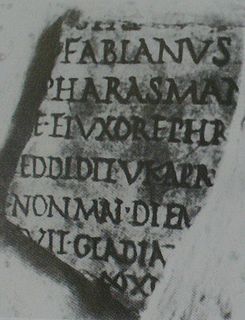 W
WThe Fasti Ostienses are a calendar of Roman magistrates and significant events from 49 BC to AD 175, found at Ostia, the principal seaport of Rome. Together with similar inscriptions, such as the Fasti Capitolini and Fasti Triumphales at Rome, the Fasti Ostienses form part of a chronology known as the Fasti Consulares, or Consular Fasti.
 W
WThe Acta Triumphorum or Triumphalia, better known as the Fasti Triumphales, or Triumphal Fasti, is a calendar of Roman magistrates honoured with a celebratory procession known as a triumphus, or triumph, in recognition of an important military victory, from the earliest period down to 19 BC. Together with the related Fasti Capitolini and other, similar inscriptions found at Rome and elsewhere, they form part of a chronology referred to by various names, including the Fasti Annales or Historici, Fasti Consulares, or Consular Fasti, and frequently just the fasti.
 W
WFebruarius, fully Mensis Februarius, was the shortest month of the Roman calendar from which the Julian and Gregorian month of February derived. It was eventually placed second in order, preceded by Ianuarius and followed by Martius. In the oldest Roman calendar, which the Romans believed to have been instituted by their legendary founder Romulus, March was the first month, and the calendar year had only ten months in all. Ianuarius and Februarius were supposed to have been added by Numa Pompilius, the second king of Rome, originally at the end of the year. It is unclear when the Romans reset the course of the year so that January and February came first.
 W
WIanuarius, fully Mensis Ianuarius, was the first month of the ancient Roman calendar, from which the Julian and Gregorian month of January derived. It was followed by Februarius ("February"). In the calendars of the Roman Republic, Ianuarius had 29 days. Two days were added when the calendar was reformed under Julius Caesar in 45 BCE.
 W
WThe Ides of March is the 74th day in the Roman calendar, corresponding to 15 March. It was marked by several religious observances and was notable for the Romans as a deadline for settling debts. In 44 BCE, it became notorious as the date of the assassination of Julius Caesar which made the Ides of March a turning point in Roman history.
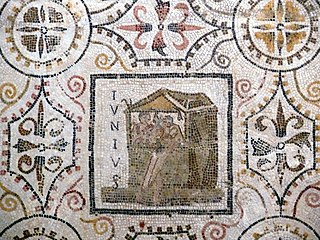 W
WOn the ancient Roman calendar, mensis Iunius or Iunius, also Junius (June), was the fourth month, following Maius (May). In the oldest calendar attributed by the Romans to Romulus, Iunius was the fourth month in a ten-month year that began with March (Martius, "Mars' month"). The month following June was thus called Quinctilis or Quintilis, the "fifth" month. Iunius had 29 days until a day was added during the Julian reform of the calendar in the mid-40s BC. The month that followed Iunius was renamed Iulius (July) in honour of Julius Caesar.
 W
WAncient Roman fasti were calendars (fasti) that recorded religious observances and officially commemorated events. They were typically displayed in the form of an inscription at a prominent public location such as a major temple; several of these fasti survive, but in states of varying fragmentation. Some calendars are preserved as papyri or manuscripts.
 W
WMaius or mensis Maius (May) was the third month of the ancient Roman calendar, following Aprilis (April) and preceding Iunius (June). On the oldest Roman calendar that had begun with March, it was the third of ten months in the year. May had 31 days.
 W
WMartius or mensis Martius ("March") was the first month of the ancient Roman year until possibly as late as 153 BC. After that time, it was the third month, following Februarius (February) and preceding Aprilis (April). Martius was one of the few Roman months named for a deity, Mars, who was regarded as an ancestor of the Roman people through his sons Romulus and Remus.
 W
WThe nundinae, sometimes anglicized to nundines, were the market days of the ancient Roman calendar, forming a kind of weekend including, for a certain period, rest from work for the ruling class (Patricians).
 W
WIn the ancient Roman calendar, Quintilis or Quinctilis was the month following Junius (June) and preceding Sextilis (August). Quintilis is Latin for "fifth": it was the fifth month in the earliest calendar attributed to Romulus, which began with Martius and had 10 months. After the calendar reform that produced a 12-month year, Quintilis became the seventh month, but retained its name. In 45 BC, Julius Caesar instituted a new calendar that corrected astronomical discrepancies in the old. After his death in 44 BC, the month of Quintilis, his birth month, was renamed Julius in his honor, hence July.
 W
WSeptember or mensis September was originally the seventh of ten months on the ancient Roman calendar that began with March. It had 29 days. After the reforms that resulted in a 12-month year, September became the ninth month, but retained its name. September followed what was originally Sextilis, the "sixth" month, renamed Augustus in honor of the first Roman emperor, and preceded October, the "eighth" month that like September retained its numerical name contrary to its position on the calendar. A day was added to September in the mid-40s BC as part of the Julian calendar reform.
 W
WSextilis ("sixth") or mensis Sextilis was the Latin name for what was originally the sixth month in the Roman calendar, when March was the first of ten months in the year. After the calendar reform that produced a twelve-month year, Sextilis became the eighth month, but retained its name. It was renamed Augustus (August) in 8 BC in honor of the first Roman emperor, Augustus. Sextilis followed Quinctilis, which was renamed Julius (July) after Julius Caesar, and preceded September, which was originally the seventh month.
 W
WThe Transvectio equitum was a parade of the young men (iuventus) of the Roman equestrian class (equites) that took place annually on 15 July. Dionysius of Halicarnassus states that the procession began at the Temple of Mars in Clivo situated along the Via Appia some two kilometers outside the Porta Capena. The procession stopped at the Temple of Castor and Pollux in the Forum Romanum before continuing on to the Temple of Iuppiter Optimus Maximus on the Capitoline Hill. The religious rite traced its origins to the battle of Lake Regillus when the Dioscuri gave aid to the Romans during the battle itself.